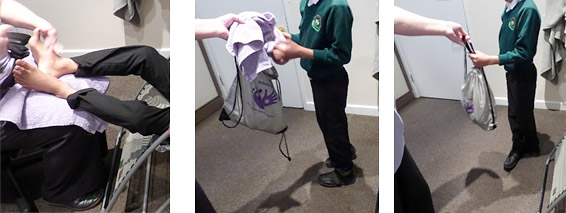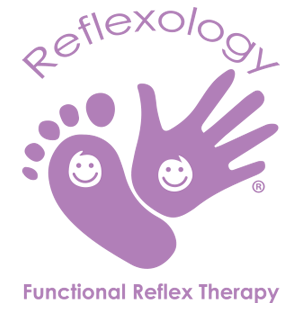Environment Setting: Getting it Right.
I had the privilege of introducing another young person this week to the positive touch of Reflexology.
The session certainly had an interesting beginning and it made me revisit the discussion of preparing the environment we work in as reflexologists. Have you ever considered how you might prepare yourself, your environment and the person receiving your therapy, when there may be communication difficulties, intellectual disabilities and complex needs to consider?

Working as a Reflexology Therapist in a special school is a very privileged position, sharing the positive touch therapy and supporting the well-being of young people as a therapeutic intervention on the timetable. But the position is not just about Reflexology. The primary intention of my sessions are always to encourage the young person to relax in the moment and I always ask myself the same question are they in a better frame of mind at the end of the session?
It’s also about working as a valued member of the MDT (multi-disciplinary team) around the child. I take advice and work with the classroom teacher and LSA’s (Learning Support Assistants) where I look to support some individual targets which may include for example, helping young people to visit a new part of the school, making choices and following instructions. I take advice from the Sp & LTh (Speech and Language Therapist) for signs, symbols, methods of communication and vocabulary. I take advice from the OT (Occupational Therapist) about skills for independence and using certain seating equipment. I work with the school nurse who has invaluable information about medical conditions for my background learning (amongst other things).
The first time in the therapy room may be a challenge to best meet the needs of the person attending for many reasons.
Being an advanced organiser is so important in our work; it allows us to feel more comfortable if we are as best prepared as possible.
How do we achieve this with children and adults who may not be able to hear our voice or read information? How do we share information if someone has difficulty taking in all the wonderful information we feel we are generously providing to help them? How do you effectively communicate with someone who cannot read facial gestures or body language or someone who is so anxious and uptight because the world around them is quite frightening as it may be difficult for them to understand what is going on or what we are expecting?
When preparing my therapy room one of the most valuable things to allow for is being able to give time. Sufficient time to be as effective as possible with my methods of communication and for the young person to process the information and respond.

The time in the therapy room at school gives us plenty of time to say hello.
Plenty of time to try out chairs to suit.
As you see in the photos time to encourage the giving of feet and time to get my young receiver involved with the FRT tool kit.
- Have you ever thought that you could provide too much information and what happens to us when we feel overwhelmed?
- We usually provide beautiful and comfortable therapy settings, could you consider how you may change or adapt your setting, if your client found the lovely pictures on the wall too much of a distraction not to be able to settle? How would you know it was the pictures if they were not able to tell you?
- Do you use any creams or balms with lovely aromas? How do you assess this loveliness if your client finds it difficult to communicate their likes and dislikes and will it make a difference to how they feel within the therapy room?
- Do you offer a blanket and if so do they have a preferred colour? Could this make a difference to settling and feeling comfortable during the session?
- Do you have the lights on or off, do you ask your clients about the lighting? How do you ascertain their preference if it’s not possible for them to answer your question how do you decide? Or if it’s not possible for them to make a decision straight away how much time do you allow?
- Do you play music? Some of the young people I work with have sensory disorders and may have very heightened senses, particularly hearing. For some no sound is the most beautiful thing they can listen to; but how do we help them to tell us this?
It may all seem a little daunting if it’s something you haven’t considered, or you haven’t had much experience with (so far). Just giving a little thought, taking advice and maybe making a few changes and adapting a few things, may allow you to be more comfortable and confident to offer your Reflexology and make the therapy accessible for all.
I would love to hear how you prepare yourself and your therapy room and what you do to create the right environment.
Lorraine




